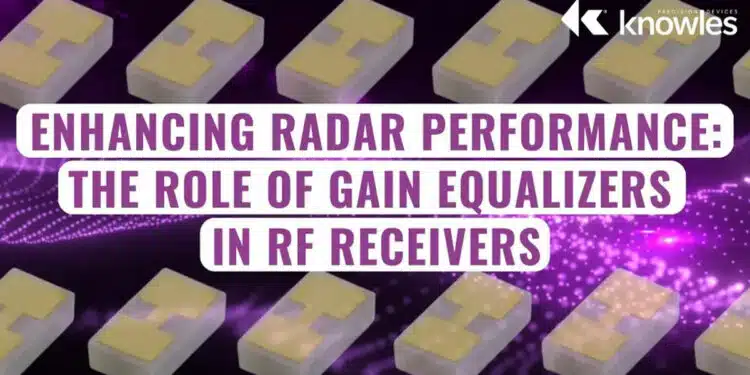This article based on Knowles Precision Devices blog explains the role of gain equalizers in RF Receivers enhancing radar performance.
Low-noise amplifiers (LNAs) in radio frequency (RF) receivers are designed to amplify low-amplitude signals (i.e., less than -100 dBm) from an antenna without decreasing their signal-to-noise ratio (SNR).
In radar applications, a strong SNR increases the likelihood of detecting a target, so LNAs play an important functional role (Figure 1). Effective targeting requires both high resolution and high accuracy. A strong SNR translates to high accuracy.
To accommodate the performance demands and size constraints of phased-array radar systems and receive those signals of interest, LNAs must generate very low noise and deliver high gain. That said, this is a challenging combination of design specifications. Engineers must consider effective power limiting, thermal compensation and frequency equalization over a wide bandwidth.
Optimizing RF Performance with Integrated Gain Equalization
RF amplifiers can produce uneven gain across a device’s operational bandwidth, causing distortion and other undesirable effects. Frequency equalization requires introducing a positive gain slope to the system to compensate for the natural gain roll-off in most wideband RF amplifiers.
Incorporating gain equalization directly into the amplifier design through integrated components allows engineers to simplify the design (e.g., removing discrete resistors and capacitors).
The uncompensated gain slope and the number of gain equalizers needed to produce an even gain depend on the amplifier. You can combine equalizers to achieve the gain slope that’s appropriate for your application.
Passive gain equalizers are best suited for low-noise amplifier designs because of their compact form and lack of DC power and control signal requirements. With a monolithic construction, precision thin-film conductor technology and resistor films with proprietary high dielectric constant ceramics, Knowles’ DLI brand gain equalizers offer excellent RF performance and repeatability.
| Key Specifications | |
| Bandwidth | (DC – 22GHz, DC – 45GHz) |
| Normal Slope | (3, 4, 5, 6, 7, 8, 9 dB); interchangeable footprint |
| Low Excess Insertion Loss | (<2dB @ Max Freq) |
































